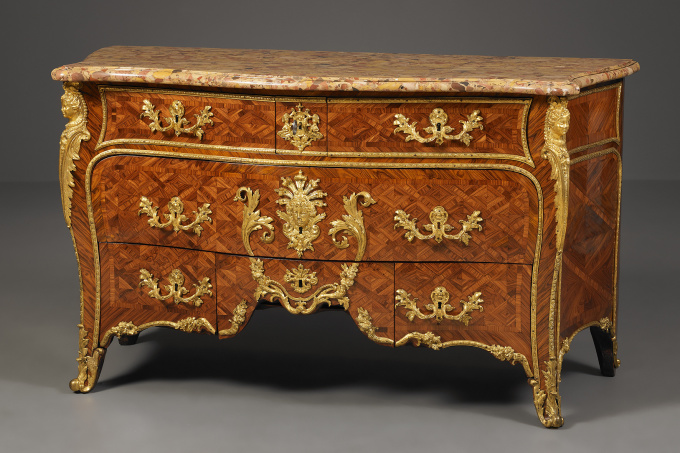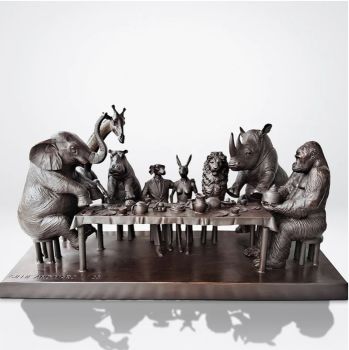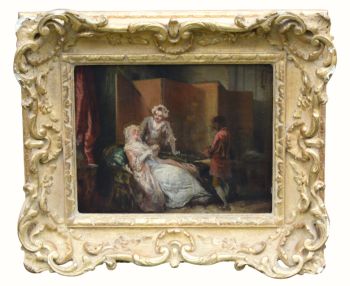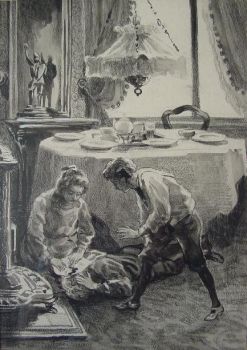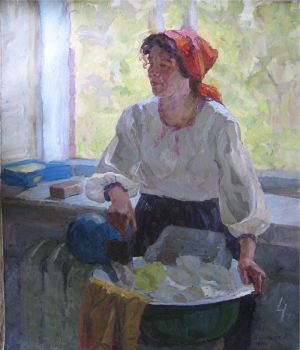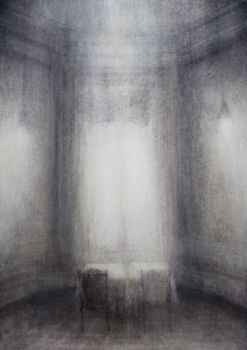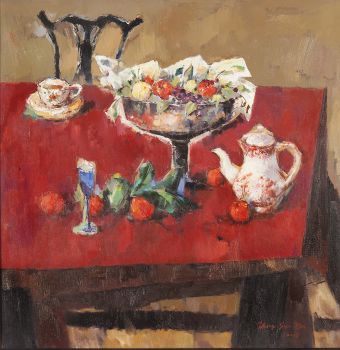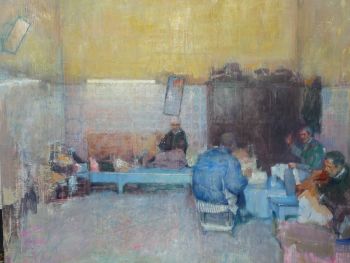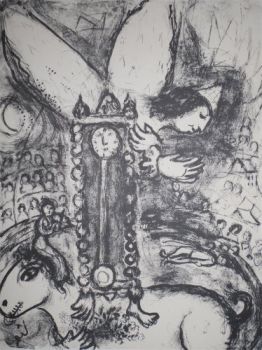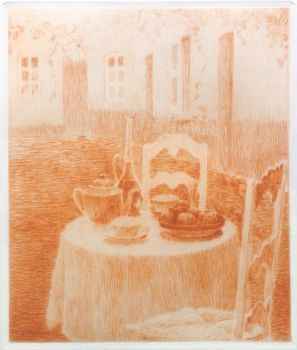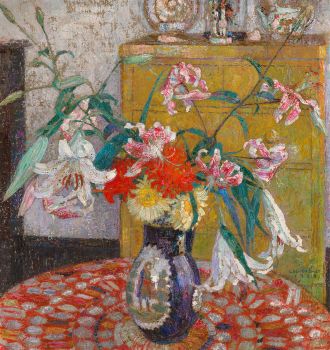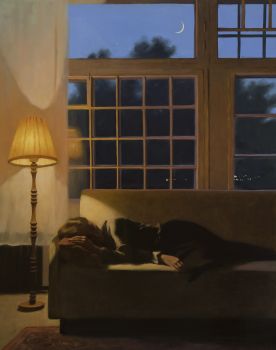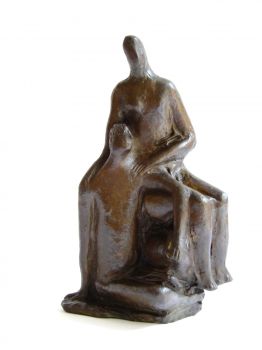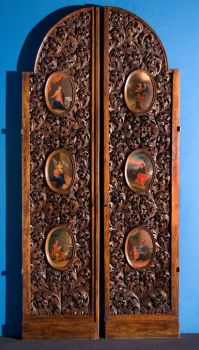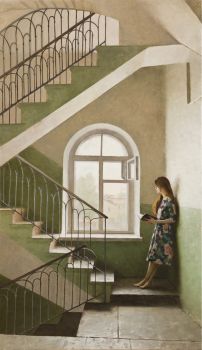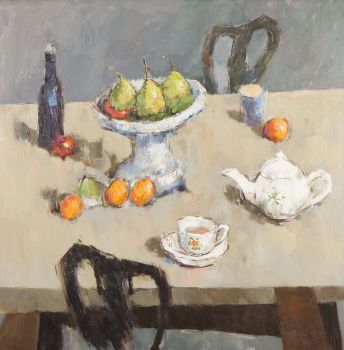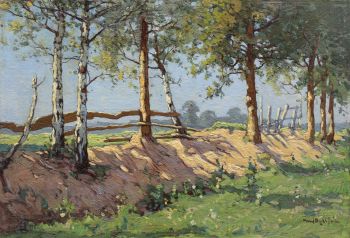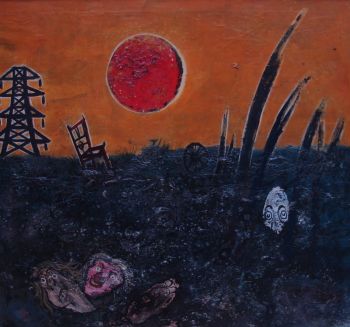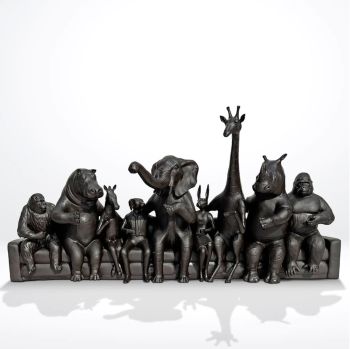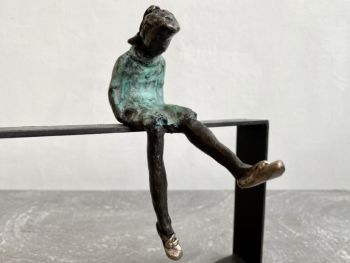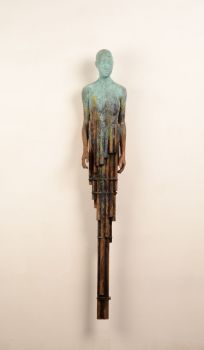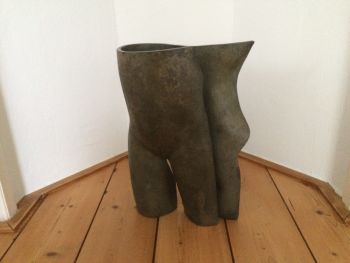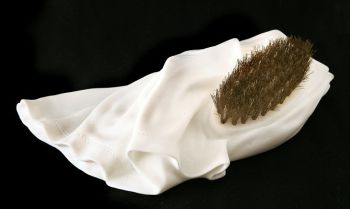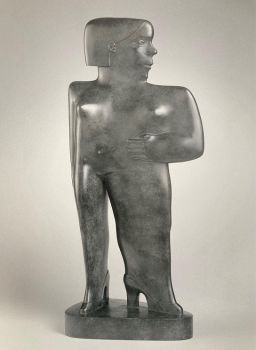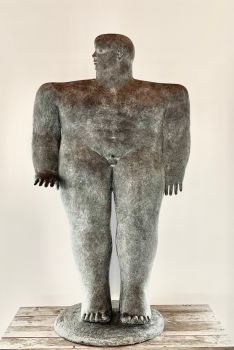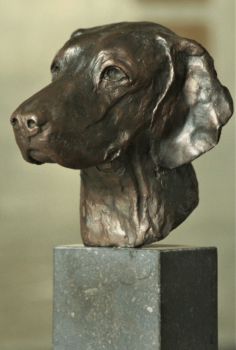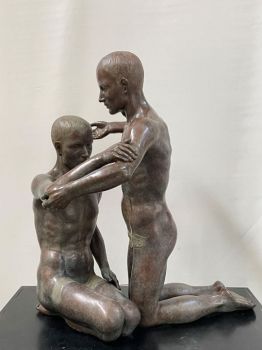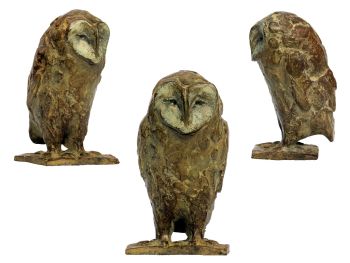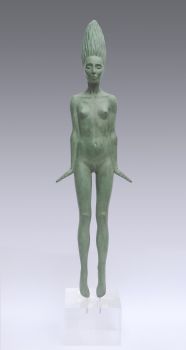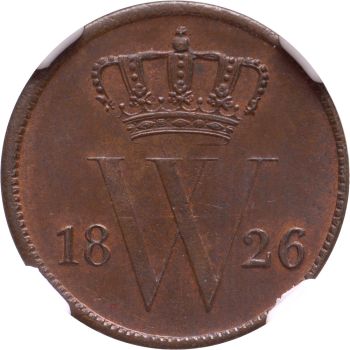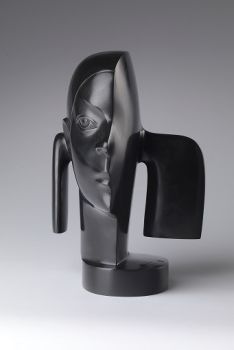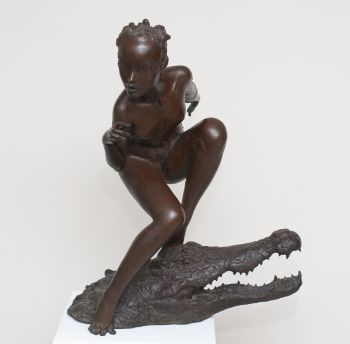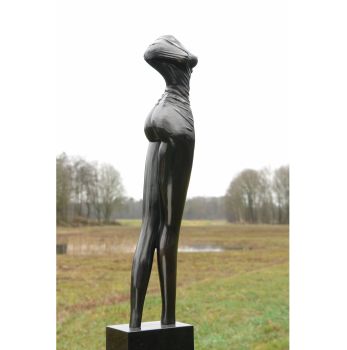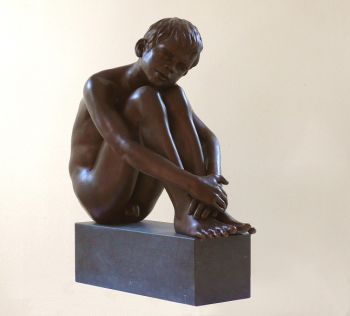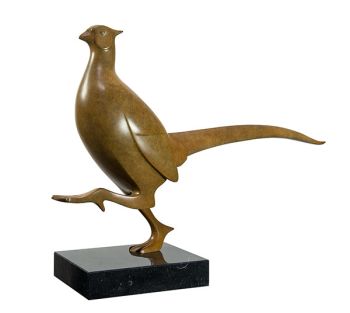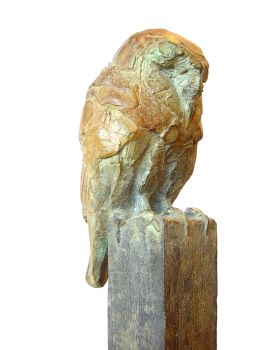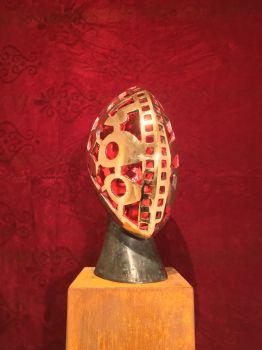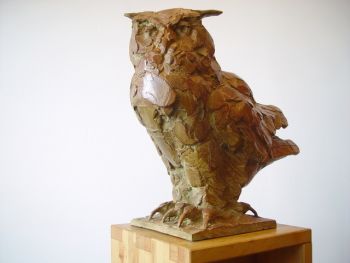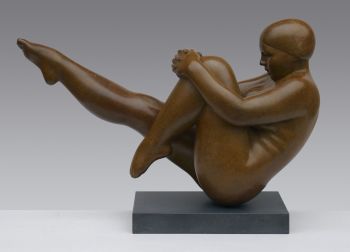A Magnificent Ormolu Mounted French Régence Commode 1725
Etienne Doirat
MármolPiedraBronceOroMetalDorado
87 ⨯ 152 ⨯ 68 cm
ConditionExcellent
Actualmente no disponible a través de Gallerease
- Sobre la obra de arteA Régence commode from about 1720-1725 with curved shapes of a model that is commonly referred to as "Commode à Pont". The commode has seven drawers in three layers, of which two without "traverse apparente". The commode with a carcase of oak and pine is decorated with geometric marquetry motifs on the front and the sides in bois de violette. The commode is decorated with ormolu mounts with motifs of espagnolettes, plumed masks, sphinxes and leaf and volute motives. The commode has a Brèche d'Alep marble top.
The commode has a curved shape at the front, as well as at the sides. The equally curved jambs rest on small curved legs. The middle part of the skirt has been deepened in the form of an arch. This is where the “Commode à Pont” gets its name from.
The walnut drawers are decorated with veneer in geometrical diamond motifs. The sides and jambs have contrasting geometric fan shapes in violet wood.
The commode is richly decorated with gilt bronze mounts. The drawers are framed with trimmings that support the overall structure perfectly. The front is decorated with a feathered mascaron in a cartouche of foliate motifs, reminiscent of the work of André Charles Boulle.
Etienne Doirat (ca. 1675-1732)
Doirat was probably born around 1675-1680 and lived after his marriage in 1704 in the Grande Rue du Faubourg Saint-Antoine. In 1726 he moved to the entrance of the Faubourg Saint-Antoine near the Bastille.
On his death in 1732 his studio had eleven employees. The inventory mentioned no fewer than 200 pieces of furniture, finished or unfinished, including commodes, bureaux-plats and bookcases, but also ‘sécretaires en pentes’ entirely to the taste of the time. The style and quality of Doirats’ furniture equals that of André Charles Boulle in both structure and finishing, as well as in the application of bronze ornaments. This style precedes similar furniture by Charles Cressent (1685-1768).
According to the inventory that is drawn up after the death of Doirat, his stock contained many models in lead, rough castings, and unfinished workpieces, to serve as bronze decorations for his furniture. This proves that Doirat kept his bronze models exclusively to himself.
Doirat was one of the few cabinet makers who stamped his name on his work far before this was mandated by the Jurande of Menuisiers-Ebénistes in 1743. This obligation was ratified by the king in 1751. The audit by the "Jurande" served not only tax purposes, but was also a means of quality control with regard to reliability and flaws in the materials used. All of this had to be perfect before the "JME"-brand was applied.
This commode is made by DOIRAT, but probably, because it also bears the stamp of LSP, traded by his son in law Louis Simon Painsun. Painsun was admitted in 1730 as maître, but there is no known work of his hand. He worked in the studio of Doirat, which he took over after his death. He mainly delivered to MIGEON, which explains the third stamp on this commode. The commode also carries the ink-written name of Migeon on the wooden frame.
Stamped: DOIRAT, MIGEON, LSP [Louis Simon Painsun] - Sobre el artistaEtienne Doirat probablemente nació alrededor de 1675-1680 y vivió después de su matrimonio en 1704 en la Grande Rue du Faubourg Saint-Antoine. En 1726 se trasladó a la entrada del Faubourg Saint-Antoine cerca de la Bastilla. A su muerte en 1732, su estudio tenía once empleados. El inventario mencionaba no menos de 200 muebles, terminados o sin terminar, incluidos inodoros, bureaux-plats y librerías, pero también "sécretaires en pentes" enteramente al gusto de la época. El estilo y la calidad del mobiliario de Doirats iguala al de André Charles Boulle tanto en estructura como en acabado, así como en la aplicación de adornos de bronce. Este estilo precede a muebles similares de Charles Cressent (1685-1768). Según el inventario elaborado después de la muerte de Doirat, su stock contenía muchos modelos en plomo, fundiciones en bruto y piezas de trabajo sin terminar, para servir como decoraciones de bronce para sus muebles. Esto prueba que Doirat guardó sus modelos de bronce exclusivamente para él. Doirat fue uno de los pocos ebanistas que estamparon su nombre en su trabajo mucho antes de que esto fuera ordenado por el Jurande de Menuisiers-Ebénistes en 1743. Esta obligación fue ratificada por el rey en 1751. La auditoría del "Jurande" no solo sirvió con fines fiscales, pero también fue un medio de control de calidad en lo que respecta a la confiabilidad y las fallas en los materiales utilizados. Todo esto tenía que ser perfecto antes de que se aplicara la marca "JME".
Artwork details
Categoría
Tema
Estilo
Material y Técnica
Colour
Related artworks
Artista Desconocido
UN NETSUKE MARINE MARFIL DE UN HOLANDÉS CON UN VENTILADOR CHINO18th century
Precio a consultarZebregs & Röell - Fine Art - Antiques
1 - 4 / 24Jan Sluijters
Original illustration of Sluijters for the book: 'Laura's opstel'1881 - 1957
Precio a consultarKunsthandel Pygmalion
Artista Desconocido
Japanese transition-style lacquer coffer 1640 - 1650
Precio a consultarZebregs & Röell - Fine Art - Antiques
1 - 4 / 24Franz (NamGreb) Bergmann
Franz Bergman – Viennese cold-painted bronze lizard with a mechanical mouth1900 - 1909
Precio a consultarAntiques Emporium
1 - 4 / 24

